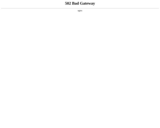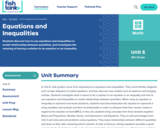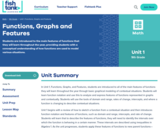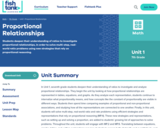
This video lesson provides a real-world application of function notation. Students can check their understanding with an assessment. [3:11]
- Subject:
- Mathematics
- Material Type:
- Audio/Video
- Provider:
- Sophia Learning
- Date Added:
- 12/01/2023

This video lesson provides a real-world application of function notation. Students can check their understanding with an assessment. [3:11]

Students take a numerical and tabular look at finding the maximum value of an open box constructed by folding a rectangular sheet of material with cutout square corners. They also understand the concepts of independent and dependent variables.

Students learn how the aerodynamics and rolling resistance of a car affect its energy efficiency through designing and constructing model cars out of simple materials. As the little cars are raced down a tilted track (powered by gravity) and propelled off a ramp, students come to understand the need to maximize the energy efficiency of their cars. The most energy-efficient cars roll down the track the fastest and the most aerodynamic cars jump the farthest. Students also work with variables and plot how a car's speed changes with the track angle.

Learn how to identify the dependent and the independent variables in a word problem. [2:09]
Khan Academy learning modules include a Community space where users can ask questions and seek help from community members. Educators should consult with their Technology administrators to determine the use of Khan Academy learning modules in their classroom. Please review materials from external sites before sharing with students.

Demonstrates how to plot dependent and independent variables on a line graph. [1:00]
Khan Academy learning modules include a Community space where users can ask questions and seek help from community members. Educators should consult with their Technology administrators to determine the use of Khan Academy learning modules in their classroom. Please review materials from external sites before sharing with students.

This StudyCard stack uses real-world contexts to teach the concepts of independent and dependent variables, and then domain and range. It includes practical examples at the end.

Students discover how to use equations and inequalities to model relationships between quantities, and investigate the meaning of having a solution to an equation or an inequality.

Use this activity to explore forces acting on objects, practice graphing experimental data, and introduce the algebra concepts of slope and intercept of a line. A wooden 2 x 4 beam is set on top of two scales. Students learn how to conduct an experiment by applying loads at different locations along the beam, recording the exact position of the applied load and the reaction forces measured by the scales at each end of the beam. In addition, students analyze the experiment data with the use of a chart and a table, and model/graph linear equations to describe relationships between independent and dependent variables.

Students are introduced to the main features of functions that they will learn throughout the year, providing students with a conceptual understanding of how functions are used to model various situations.

A series of pages that help us understand testing one or more components of a trend using specific comparisons, a set of coefficients, error analysis of variance and the probability value.

This site is a tutorial for students in algebra 2 or for those who need a refresher. The site has explanations, definitions, examples, practice problems and practice tests are found covering topics such as linear equations, graphing, quadratic equations, and rational expressions.

Students design, build and test model race cars made from simple materials (lifesaver-shaped candies, plastic drinking straws, Popsicle sticks, index cards, tape) as a way to explore independent, dependent and control variables. They measure the changes in distance travelled with the addition of mass to the vehicles. Students also practice the steps of the engineering design process by brainstorming, planning, building, testing, and improving their "mint-mobiles."

In this lesson, students learn about linear functions and how they can be represented as rules and data tables. Includes a worksheet with exploration questions to accompany an interactive Linear Function Machine. The lesson plan is aligned with the NCTM Standards.

This is an interactive site allowing the student to input data (one dependent and three independent variables) and then letting the computer calculate the regression between these multiple forces.

Students conduct an experiment to determine how varying the composition of a construction material affects its strength. They make several adobe bricks with differing percentages of sand, soil, fibrous material and water. They test the bricks for strength by dropping them onto a concrete surface from progressively greater heights. Students graph the experiment results and use what they learn to design their own special mix that maximizes the bricks' strength. During the course of the experiment, students learn about variables (independent, dependent, control) and the steps of the engineering design process.

Students deepen their understanding of ratios to investigate proportional relationships, in order to solve multi-step, real-world ratio problems using new strategies that rely on proportional reasoning.

Psychology is designed to meet scope and sequence requirements for the single-semester introduction to psychology course. The book offers a comprehensive treatment of core concepts, grounded in both classic studies and current and emerging research. The text also includes coverage of the DSM-5 in examinations of psychological disorders. Psychology incorporates discussions that reflect the diversity within the discipline, as well as the diversity of cultures and communities across the globe.Senior Contributing AuthorsRose M. Spielman, Formerly of Quinnipiac UniversityContributing AuthorsKathryn Dumper, Bainbridge State CollegeWilliam Jenkins, Mercer UniversityArlene Lacombe, Saint Joseph's UniversityMarilyn Lovett, Livingstone CollegeMarion Perlmutter, University of Michigan


By the end of this section, you will be able to:
Explain what a correlation coefficient tells us about the relationship between variables
Recognize that correlation does not indicate a cause-and-effect relationship between variables
Discuss our tendency to look for relationships between variables that do not really exist
Explain random sampling and assignment of participants into experimental and control groups
Discuss how experimenter or participant bias could affect the results of an experiment
Identify independent and dependent variables
